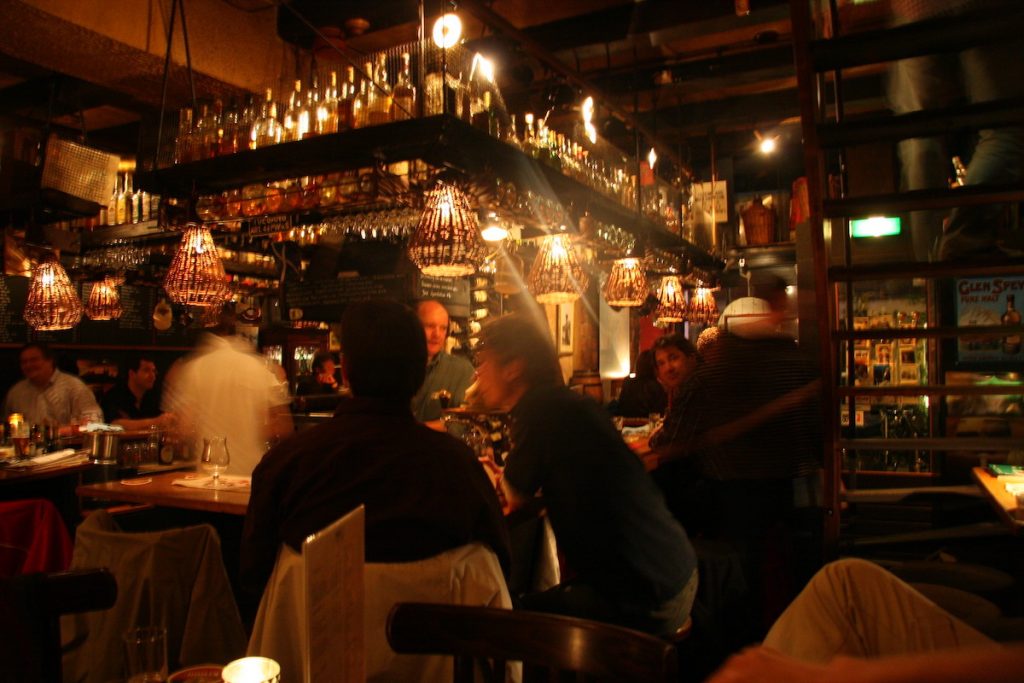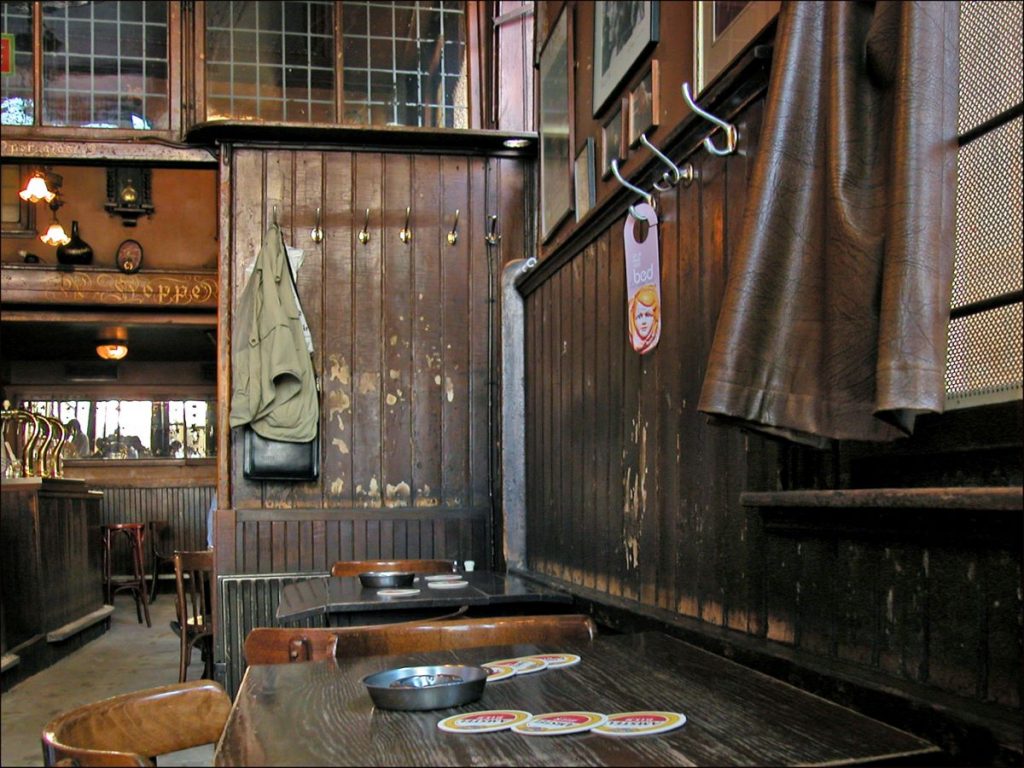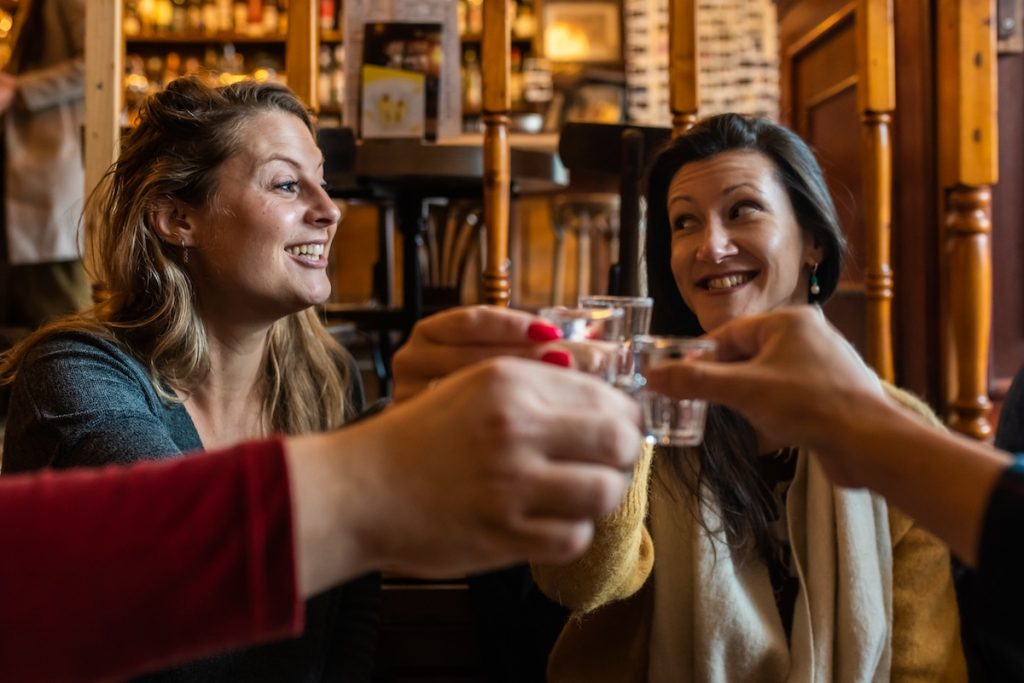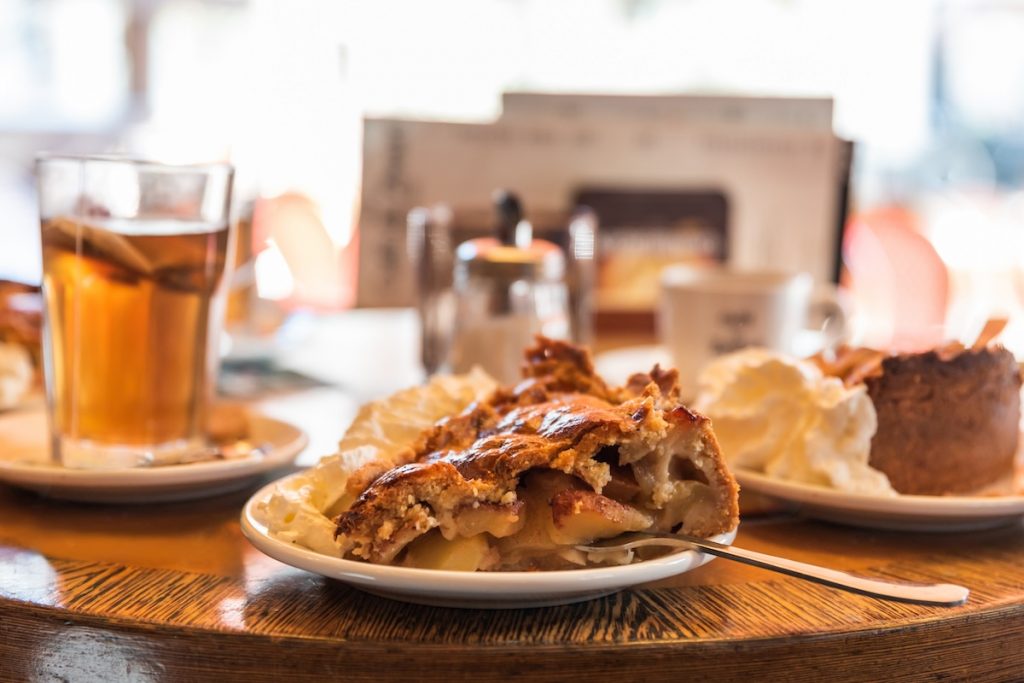Alongside Amsterdam’s painfully hip natural wine bars and TikTok trending coffee spots, you’ll find that classic Dutch bar known as the bruin café. Many of them are centuries old, but just as many tell tall tales about their supposed past. The best way to enjoy Dutch brown cafes is to simply order a beer or jenever.
Or do like the Dutch and order both: this is known as a kopstootje (pronounced “cop-stow-chuh”). Here are a few of our favorite bruin cafés to drink in the history, experience the atmosphere, or simply enjoy a slice of apple pie during your time in Amsterdam.

A brief history of the bruin café
Today’s Dutch brown cafes can trace their roots back to the popular inns and taverns of the Middle Ages, where locals and travelers alike could eat typical dishes, drink, and stay. The Dutch term bruin café is believed to have originated from the brown color of the interiors, which resulted from years of tobacco smoke staining the wooden furnishings and ceilings.
This gave these cafés the distinctive, cozy ambiance that has become synonymous with Dutch pub culture. Brown cafés have long been meeting places for various social groups, including artists, intellectuals, workers, and students, contributing to the vibrant intellectual and social life of the communities they serve.
Despite modernization and changes in social habits, many have retained their traditional decor and atmosphere, offering a nostalgic glimpse into the past.
Insider’s Tip: Want to know what to eat in Amsterdam? Why not sign up for our Ultimate Amsterdam Food Tour? While local tour guides lead you through the most beautiful and historic districts in Amsterdam, you’ll be able to try the most unique flavors and traditional dishes.

Oldest Dutch brown cafes
Many travel guides will tell you that In ‘t Aepjen (Zeedijk, 1) is Amsterdam’s “official oldest café”, along with a suspicious story that sailors who used to stay here sometimes paid their bar tab with the monkeys they brought back from their travels. It’s pure monkey business.
While the wooden building on Zeedijk 1 is, indeed, one of the city’s oldest, the first registered café in this location dates from 1991. So where is Amsterdam’s oldest brown bar, then?
- De Drie Fleschjes: As it turns out, Amsterdam’s oldest drinking locale can be found just behind Dam Square. Local lore has it that Rembrandt, Admiral De Ruyter and Spinoza opened it in 1650, but a historian recently traced its origins back even further, to 1619, when the owner was Barend van Someren, a painter and art dealer. Today, serves a wide range of jenever, a fine selection of local liquors, as well as specialty beers and wines in a historic interior that breathes Golden Age charm.
- Karpershoek: established in 1641 (and possibly even earlier), still features antique Delft blue tiles, a traditional sandy floor and a convenient location opposite Centraal Station.
- The quaint and convivial De Dokter has been prescribing a cure for whatever ails its patrons since 1706. Packed with trinkets and plenty of historical character, “The Doctor” is not only the city’s third oldest bruin café but at 187 square feet, also one of its smallest.
- Café Chris (Bloemstraat, 42): is often called the oldest brown bar in Jordaan. The story goes that it opened its doors in 1624 as a beer house and that the builders of the nearby Westertoren came to collect their pay here, rubbing shoulders with Rembrandt, who lived nearby. But there is no evidence for this in the city records. In fact, the first registered drinking house at this address was in 1882. It has since become a mainstay of the Jordaan café scene.

From distillery to drinking locale
Some of Amsterdam’s best brown bars started life as distilleries:
- Like Freddy Heineken’s favorite, Café Hoppe with its original 17th-century interior, stained glass windows, and convivial terrace.
- Similarly, the beautiful brass fixtures at Café ’t Smalle echo its 18th-century origins, when it was the Hoppe distillery. Today, there‘s also a twee terrace on one of Jordaan’s most charming canals.
- Or admire the old liqueur vats behind the bar at the 129-year-old Café Hesp, before heading out to its huge riverside terrace.
- Many cafes used to operate as an off-license. The fourth-generation family-owned Café Oosterling is one of the last, with a good selection of Dutch jenevers and other liquor sold from behind the same shop counter that was used to trade tea, coffee and spices back in 1735. Rumour has it that it’s haunted. If only the walls could talk.

Hidden histories of Amsterdam’s Dutch brown cafes
So many Dutch brown cafes, so many brilliant stories:
- At the Delft-tiled Café ‘t Papeneiland, drinks are served with a slice of history (and famous apple pie). Harking back to the days when Catholicism was outlawed in Protestant Amsterdam, there’s a (now closed-off) tunnel that runs from this former “Papists’ island” to a secret church on the opposite side of the canal.
- The wonderfully slanty wood-framed Café de Sluyswacht started life as a lock keeper’s cottage back in the 17th-century. Settle on the lovely terrace, which overlooks Rembrandt’s former home and studio, or find a seat in its cozy split-level interior with views of the Oudeschans canal.
- Café Eijlders is a relatively recent fixture on Amsterdam’s brown bar scene, but it was an important meeting place for the Dutch resistance during World War II, and its handsome 1940s interior has retained its charm with stained glass, brass chandeliers, and dark wood furnishings.
- Or head to Café Lowietje, beloved by locals for its Jordaan folksong soundtrack, juicy meatballs and authentic 1950s decor, which once served as the set for the Dutch detective series, Baantjer.
- Step into a Canal District time capsule at Café Brandon where the previous owners simply sealed up their café when they retired to their upstairs home in the 1980s. Thankfully, the new owners kept everything as it was, including the billiards room, photos, furniture – and jazzy soundtrack.
Insider’s Tip: Not all brown cafes serve food—many don’t have a kitchen and just serve borrelnootjes (a type of nut snack) or boiled eggs, if anything at all. These days some do serve a variety of snacks like apple pie, bitterballen, toasties, etc., but don’t expect it everywhere as it’s not the norm.

Ready to turn your trip into an unforgettable experience?
Discover the full range of expertly led experiences at Take Walks Tours where passionate local guides bring history, stories, and iconic sights to life. From world-famous landmarks and museums to immersive food and cultural experiences, these small-group guided tours offer deeper insight, seamless access, and unforgettable moments you’d miss on your own.
Explore with experts who know it best, and see the country through local eyes.
